Farming of Potatoes
Growing of Potatos
Potato is produced more than 100 countries, under mellow, subtropical and tropical conditions. It is essentially a "cool atmosphere trim", with temperature being the central compelling component on creation: tuber advancement is distinctly impeded in temperatures underneath 10°C (50°F) or more 30°C (86°F), while perfect yields are obtained where mean step by step temperatures are in the 18 to 20°C (64 to 68°F) domain.

Consequently, potato is planted in pre-spring in quiet zones and pre-spring in more sizzling territories, and created in the midst of the coolest times of the year in hot tropical environments. In some sub-tropical great nations, delicate temperatures and high sun based radiation empower agriculturists to create potatoes reliably, and assemble tubers inside 90 long periods of planting (in gentle environments, such in northern Europe, it can take up to 150 days).
The potato is an amazingly satisfying and flexible plant, and will make well without idealize soil and creating conditions. Nevertheless, it is moreover subject to number of aggravations and sicknesses. To keep the improvement of pathogens in the earth, agriculturists avoid creating potato on a comparative land from year to year. Or maybe, they create potato in turns of no less than three years, pivoting with other, unique harvests, for instance, maize, beans and pony feed. Items powerless to an undefined pathogens from potato (e.g. tomato) are avoided remembering the ultimate objective to break potato vermin's headway cycle.
With awesome rustic takes a shot at, including water framework when fundamental, a hectare of potato in the quiet airs of northern Europe and North America can yield more than 40 tons of new tubers inside four months of planting. In most making countries, nevertheless, ordinary yields are much lower - running from as pitiful as five tons to 25 tons - owing to nonappearance of phenomenal seed and upgraded cultivars, cut down rates of manure use and water framework, and bug and ailment issues.
Soil and land game plan
The potato can be created almost on an earth, except for saline and fundamental soils. Regularly free soils, which offer insignificant security from expansion of the tubers, are favored, and loamy and sandy topsoil soils that are wealthy in characteristic issue, with extraordinary waste and air course, are the most sensible. Soil with a pH extent of 5.2-6.4 is seen as great.
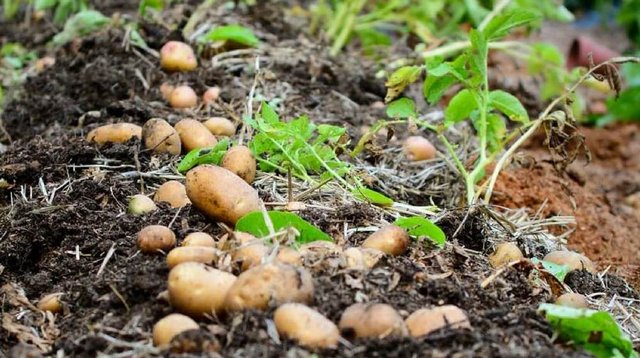
Creating potatoes incorporates expansive ground course of action. The soil ought to be harrowed until absolutely free of weed roots. When in doubt, three ploughings, close by visit alarming and rolling, are required before the soil accomplishes a proper condition: sensitive, all around exhausted and particularly coursed air through.
Planting
The potato trim is ordinarily created not from seed yet rather from "seed potatoes" - little tubers or bits of tuber sown to a significance of 5 to 10 cm. Flawlessness of the cultivars and sound seed tubers are crucial for a productive yield. Tuber seed should be without disease, particularly developed and from 30 to 40 g each in weight. Use of good quality business seed can construct yields by 30 to 50 percent, stood out from farmers' own specific seed, anyway expected advantages must adjust the higher cost.
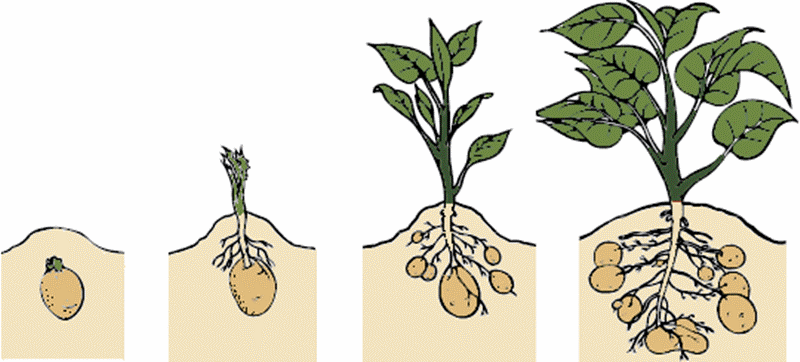
The planting thickness of a line of potatoes depends upon the traverse of the tubers picked, while the between push scattering must consider ridging of the collect (see underneath). Generally, around two tons of seed potatoes are sown per hectare. For rainfed age in dry districts, planting on level soil gives higher yields (because of better soil water safeguarding), while overwhelmed items are generally created on edges.
Crop mind
In the midst of the headway of the potato covering, which takes around multi month, weeds must be controlled remembering the true objective to give the item a "high ground". In case the weeds are extensive, they ought to be cleared before ridging assignments begin. Ridging (or "earthing up") includes mounding the soil from between the lines around the rule stem of the potato plant. Ridging keeps the plants upright and the soil free, thwarts dreadful little animal aggravations such a tuber moth from accomplishing the tubers; and keeps the advancement of weeds.
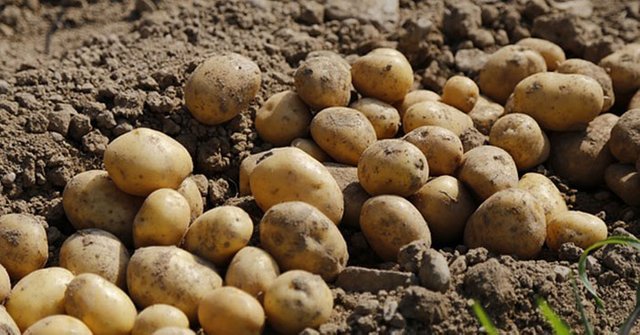
In the wake of earthing up, weeds between the creating plants and at the most noteworthy purpose of the edge are emptied mechanically or using herbicides. Ridging should be finished a couple of times at a between time of 15 to 20 days. The principal should be done when the plants are around 15-25 cm high; the second is every now and again done to cover the creating tubers.
Manuring and readiness
The use of substance excrement depends upon the level of available soil supplements - volcanic soils, for example, are routinely lacking in phosphorus - and in immersed business age, compost necessities are for the most part high. In any case, potato can benefit by use of common compost toward the start of another transformation - it gives a fair supplement change and keeps up the structure to the soil. Item treatment necessities ought to be precisely evaluated by the typical yield, the capacity of the arrangement and the normal usage of the accumulated reap.
Water supply
The soil moistness content must be kept up at a for the most part irregular state. For best yields, a 120 to multi day trim requires from 500 to 700 mm (20 to 27.5 inches) of water. At the point when all is said in done, water deficiencies in the middle to late bit of the creating time period tend to decrease yield more than those in the early part. Where supply is compelled, water is facilitated towards expanding yield per hectare rather than being associated over a greater domain.
Since the potato has a shallow root structure, yield response to visit water framework is amazing, and critical returns are obtained with robotized sprinkler systems that recharge evapotranspiration adversities each perhaps two or three days. Submerged framework in mellow and subtropical airs, a result of around 120 days can convey yields of 25 to 35 tons/ha (11 to 15.6 tons for each area of land), tumbling to 15 to 25 tons/ha (6.6 to 15.6 tons for each segment of land) in tropical zones.
Pests and infirmities
Against infirmities, a few basic security measures – alter turn, using tolerant combinations and strong, ensured seed tubers - can help avoid wonderful disasters. There is no engineered control for bacterial and viral diseases anyway they can be controlled by steady watching (and when fundamental, sprinkling) of their aphid vectors. The earnestness of parasitic diseases, for instance, late revile depends, after the essential tainting, generally on the atmosphere - consistent quality of good conditions, without substance showering, can quickly spread the infection.
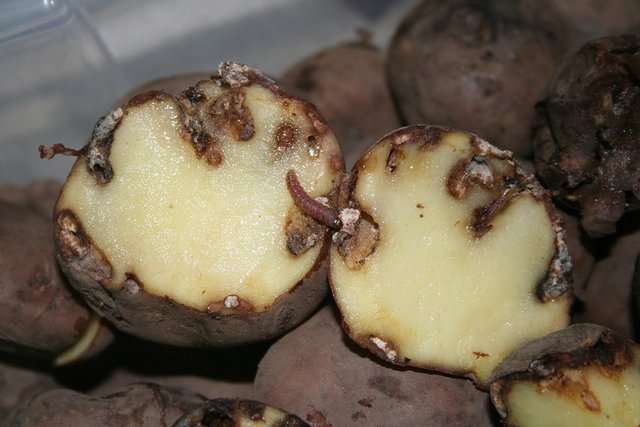
Dreadful little creature aggravations can wreak decimation in a potato settle. Endorsed control measures fuse standard watching and dares to anchor the vermin's trademark adversaries. Surely, even damage caused by the Colorado Potato Beetle, an imperative bug, can be diminished by decimating bugs, eggs and hatchlings that appear to be in front of plan for the season, while sanitation, alter turns and use of safe potato arrangements help keep the spread of nematodes.
Harvesting
Yellowing of the potato plant's leaves and straightforward parcel of the tubers from their stolons exhibit that the collect has accomplished improvement. In case the potatoes are to be secured rather than eaten up expeditiously, they are left in the soil to empower their skins to thicken - thick skins turn away limit sicknesses and shrinkage in view of water setback. In any case, leaving tubers for an extremely prolonged stretch of time in the ground extends first experience with a parasitic incrustation called dim scurf.
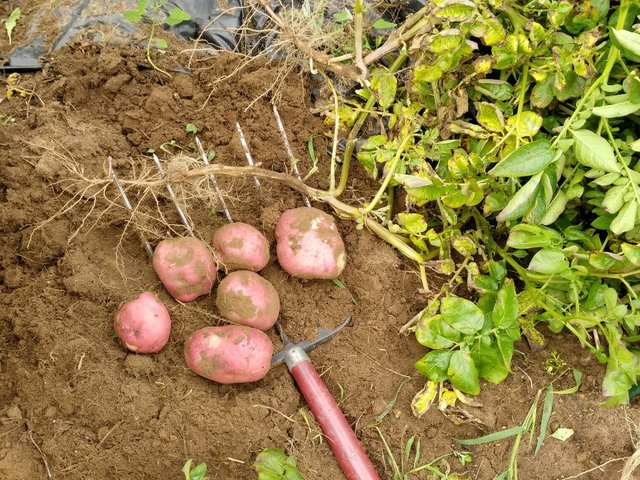
To energize gathering, the potato vines should be ousted two weeks already the potatoes are revealed. Dependent upon the measure of creation, potatoes are harvested using a spading fork, a wrinkle or business potato authorities that reveal the plant and shake or blow the earth from the tubers. In the midst of harvesting, it is basic to keep away from injuring or other harm, which give section centers to limit sicknesses.
Storage
Since the as of late assembled tubers are living tissue – and in this way subject to rot - honest to goodness limit is central, both to maintain a strategic distance from post-gather adversities of potatoes destined for fresh use or getting ready, and to guarantee a palatable supply of seed tubers for the accompanying altering season.
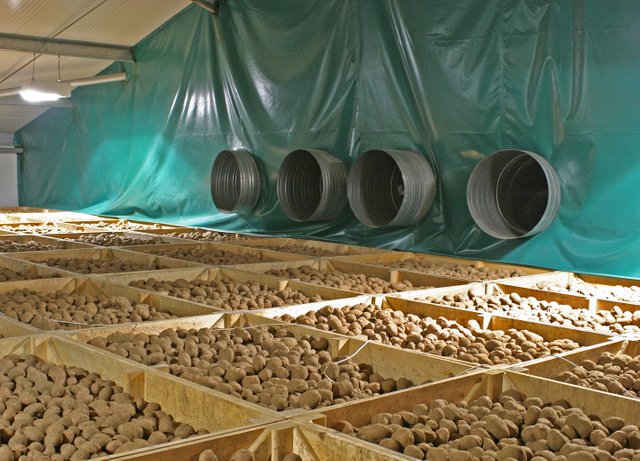
For item and getting ready potatoes, storing goes for foreseeing "greening" (the advancement of chlorophyll underneath the peel, which is connected with solanine, a possibly perilous alkaloid) and disasters in weight and quality. The tubers should be kept at a temperature of 6 to 8°C degrees, in a dull, especially ventilated condition with high relative dampness (85 to 90 percent). Seed tubers are secured, rather, under diffused light remembering the true objective to keep up their germination restrict and engage progression of vivacious sprouts. In areas, for instance, northern Europe, with only a solitary trimming season and where limit of tubers beginning with one season then onto the following is troublesome without the use of extreme refrigeration, off-season planting may offer an answer.
Amazing publication, thanks for this insightful post
Resteem
(to be a part of this community; ensure to always use #farms and #steemchurch for agricultural related post)
SteemChurch Farm (@FARMS)